Can Birds Wear Diapers? Are you a bird owner tired of constantly cleaning up after your feathered friend? Or perhaps you’re considering getting a bird but are hesitant because of their toilet habits? If so, you may be wondering if birds can wear diapers.
The answer is yes; birds can wear diapers. Bird diapers have become increasingly popular among owners who want to keep their homes clean and tidy. These diapers are designed to fit birds of various sizes and species, and they can be an excellent solution for those struggling with potty training their birds.
However, it’s important to note that bird diapers are not a substitute for proper care and hygiene. They should be used in conjunction with regular cleaning and maintenance to ensure the health and well-being of your bird. Let’s look at how bird diapers work and what you should consider before using them.
Do Bird Diapers Exist?
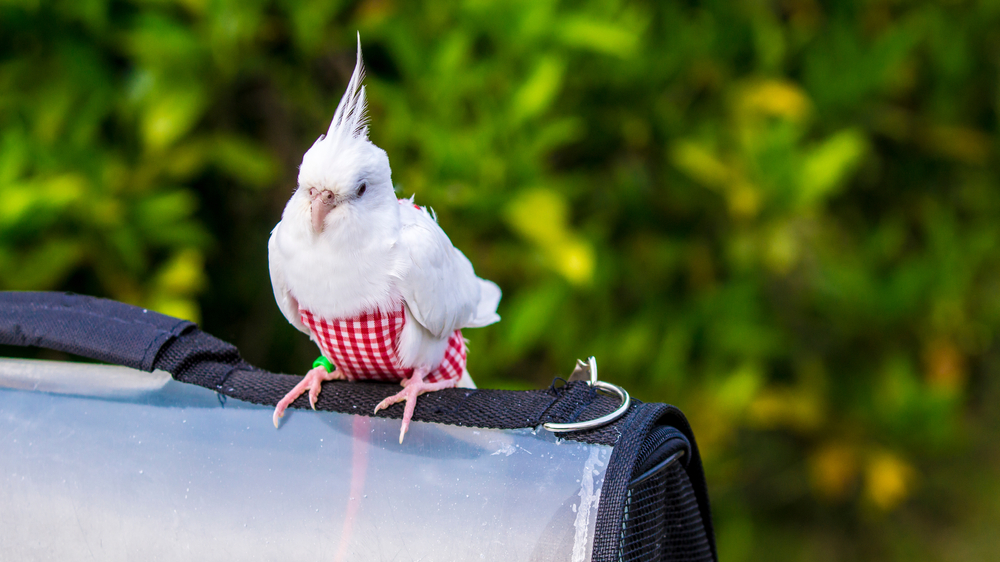
Yes, there are diapers for birds. Many bird owners use bird diapers to keep their homes clean and hygienic. Diapers are handy for birds that can roam freely around the house.
Bird diapers are similar to baby diapers but are designed specifically for birds. They are made of soft, lightweight materials that are comfortable for the bird to wear. The diapers are available in different sizes to fit different types of birds.
Bird diapers come in a variety of designs and colors, so you can choose one that matches your bird’s personality or your home decor. Some diapers even have cute patterns or designs on them.
Using a bird diaper is easy. Simply place the diaper on your bird, ensuring it fits snugly but not too tightly. The diaper will catch any droppings, keeping your bird and home clean.
It’s important to note that not all birds will take to wearing a diaper. Some birds may find it uncomfortable or stressful. If your bird is resistant to wearing a diaper, don’t force them to wear one. Instead, consider other options for keeping your home clean, such as placing your bird in a designated area with easy-to-clean surfaces.
In summary, they are valuable for keeping your home clean and hygienic. They are available in various designs and sizes and are easy to use. However, not all birds will take to wearing a diaper, so it’s important to respect your bird’s preferences and comfort level.
What is the concept of diapers for birds?
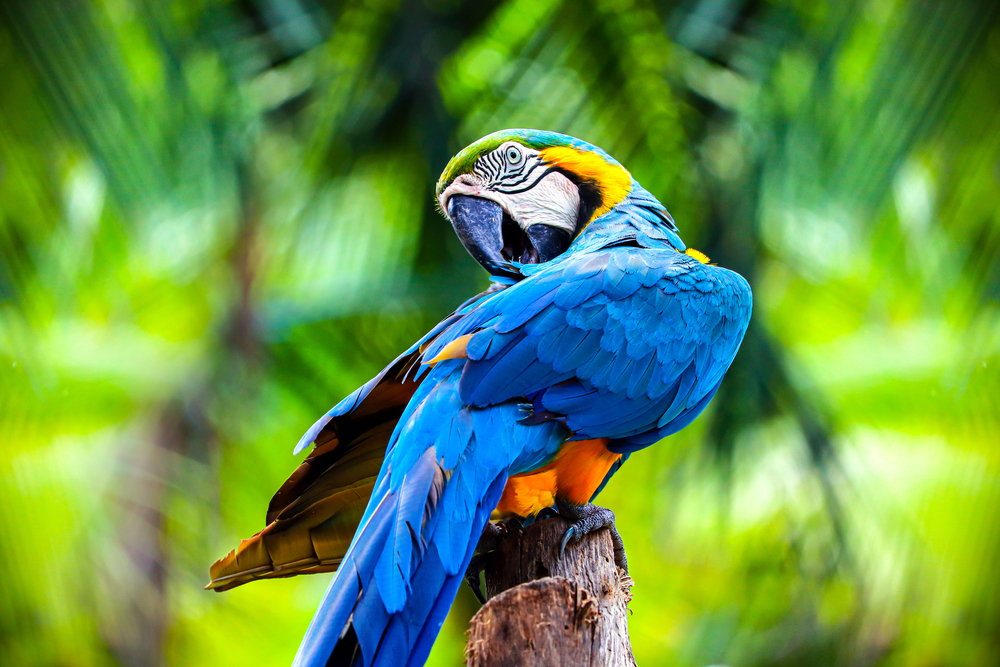
You may have heard of bird diapers if you’re a bird owner. They are cloth or disposable coverings that fit over a bird’s vent area to catch droppings. They are commonly used for birds that live indoors or for those who like to travel with their birds.
Bird diapers are designed to be comfortable for birds and easy for their owners. They come in various sizes and styles to fit different types of birds, from small parakeets to large macaws. Some bird diapers are reusable, while others are disposable.
They are not a substitute for proper care, however. They should be used only by those who have experience caring for birds and have been trained in bird diapers by an experienced professional. Additionally, they should not be a long-term solution for keeping birds indoors.
Monitoring your bird’s behavior and removing the diaper frequently to prevent irritation or infection is essential when using bird diapers. You should also clean your bird’s vent area regularly to prevent the buildup of bacteria or other harmful substances.
Overall, they can be helpful for bird owners who want to keep their birds indoors or take them on trips. However, they should be used with caution and proper care to ensure the health and well-being of your feathered friend.
Understanding Bird Diapers

You may have heard of bird diapers if you are a bird owner. They are specially designed to help keep your bird’s cage clean and prevent droppings from spreading all over your home. This section will discuss the basics, including their types, materials, and usage.
Types of Bird Diapers
They come in two main types: full-body diapers and tail-only diapers. Full-body diapers cover the entire bird’s body, while tail-only diapers only cover the tail area. Diapers can be either reusable or disposable, depending on the material they are made from.
Materials Used in Bird Diapers
Bird diapers can be made from various materials, including cotton, feathers, and other soft fabrics. Reusable bird diapers are typically made from cotton or a similar absorbent material. In contrast, disposable bird diapers are made from paper or other materials that can be discarded after use.
Usage of Bird Diapers
Bird diapers are easy to use and can be a great way to keep your bird’s cage clean. Place a bird diaper on your bird and secure it using the provided straps or fasteners. Ensure the diaper fits your bird correctly and is not too tight or loose.
Other Options for Bird Diapers
In addition to traditional bird diapers, flight suits and jungle-wear birdie diapers are available. Flight suits are full-body suits that cover the bird’s body and wings while jungle-wear birdie diapers are tail-only diapers designed to look like cute little shorts.
Overall, bird diapers can be a great way to keep your bird’s cage clean and prevent droppings from spreading all over your home. Whether you choose a full-body diaper, tail-only diaper, or flight suit, choose a diaper that fits your bird correctly and is made from high-quality materials.
Are Bird Diapers Safe for Parrots?
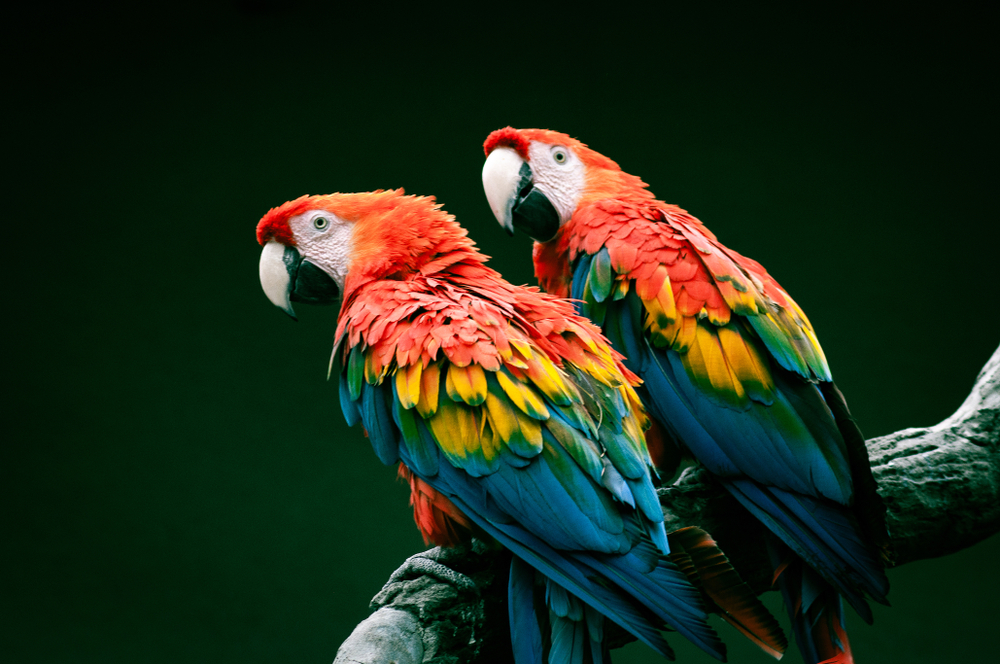
When it comes to using bird diapers for your parrot, safety is a top concern. You want to ensure that the diaper is effective at catching droppings and safe for your feathered friend. Here are a few things to consider:
Materials
Bird diapers should be made of safe, bird-friendly materials. Make sure to check the label and do your research before purchasing a bird diaper. Some materials to avoid include:
- Synthetic fabrics
- Dyes or chemicals
- Rough or abrasive materials
Fit
The fit of the bird diaper is also essential. It should be snug enough to stay in place but not too tight that it restricts your bird’s movement or breathing. Measure your bird before purchasing a diaper to ensure the right fit.
Comfort
Your bird’s comfort is also essential. Some birds may not like the feeling of a diaper on their body and may try to remove it. Monitor your bird when introducing a diaper to ensure they are comfortable and not stressed.
Risks
While bird diapers can be safe when used correctly, some risks remain to consider. For example, a too-tight diaper left on for too long can cause skin irritation or injury. Additionally, a bird may try to eat or chew on the diaper, which could lead to ingesting harmful materials.
Overall, bird diapers can be a safe and effective way to clean your parrot’s cage. However, it’s essential to research, choose a high-quality product, and monitor your bird’s comfort and safety when using a diaper.
Why Birds Might Need Diapers

If you are a bird owner, you might wonder if your feathered friend needs a diaper. While it may seem strange to put a diaper on a bird, there are several reasons why you might want to consider it.
Keep Your Home Clean
One of the main reasons why bird owners use diapers is to keep their homes clean. Birds can be messy, and their droppings can quickly accumulate on the floor, furniture, and walls. A diaper can prevent your bird’s droppings from getting all over your home.
Potty Training
Another reason why you might want to consider using a diaper is to help with potty training. Just like with dogs and cats, it is possible to train birds to use a designated area for their droppings. Using a diaper can help your bird learn where to go to the bathroom.
Fecal Sacs
Some bird species, such as robins and bluebirds, produce fecal sacs. The parents remove These portable cases for their poop from the nest to keep it clean. If you are raising a baby bird, you might need to use a diaper to mimic the function of the fecal sacs.
Hygiene
Using a diaper can also help maintain good hygiene for your bird. Not potty-trained birds may sit in their droppings, leading to infections and other health problems. By using a diaper, you can keep your bird clean and healthy.
Overall, while it may seem strange to put a diaper on a bird, there are several reasons why it might be necessary. Whether you want to keep your home clean, potty train your bird, or maintain good hygiene, using a diaper can be a valuable tool for bird owners.
Types of Bird Diapers
When it comes to bird diapers, there are a few different types to choose from. Each type has its unique features that make it suitable for different situations and bird species. Here are some of the most common types of bird diapers:
Full-Body Diapers
Full-body diapers are designed to cover your bird’s entire body, including its wings, tail, and legs. These diapers are typically made from cotton or other soft, breathable materials and are designed to be reusable. Full-body diapers are an excellent option for birds that move around a lot, as they provide complete coverage and prevent any messes from escaping.
Tail-Only Diapers
Tail-only diapers are designed to cover only your bird’s tail feathers. These diapers are often made from soft, breathable materials like cotton and are available in reusable and disposable options. Tail-only diapers are a good option for more stationary birds, as they don’t provide as much coverage as full-body diapers.
Reusable Diapers
Reusable bird diapers are designed to be washed and reused multiple times. These diapers are made from soft, breathable materials like cotton and are available in full-body and tail-only designs. Reusable diapers are an excellent option for bird owners who want to save money and reduce waste.
Disposable Diapers
Disposable bird diapers are designed to be used once and then thrown away. These diapers are often made from soft, absorbent materials like paper or cotton and are available in full-body and tail-only designs. Disposable diapers are convenient for bird owners who don’t want to handle the hassle of washing and reusing diapers.
Overall, a variety of bird diapers are available on the market, each with unique features and benefits. Whether you choose a full-body, tail-only, reusable, or disposable diaper depends on your bird’s needs and preferences.
Training Birds to Wear Diapers
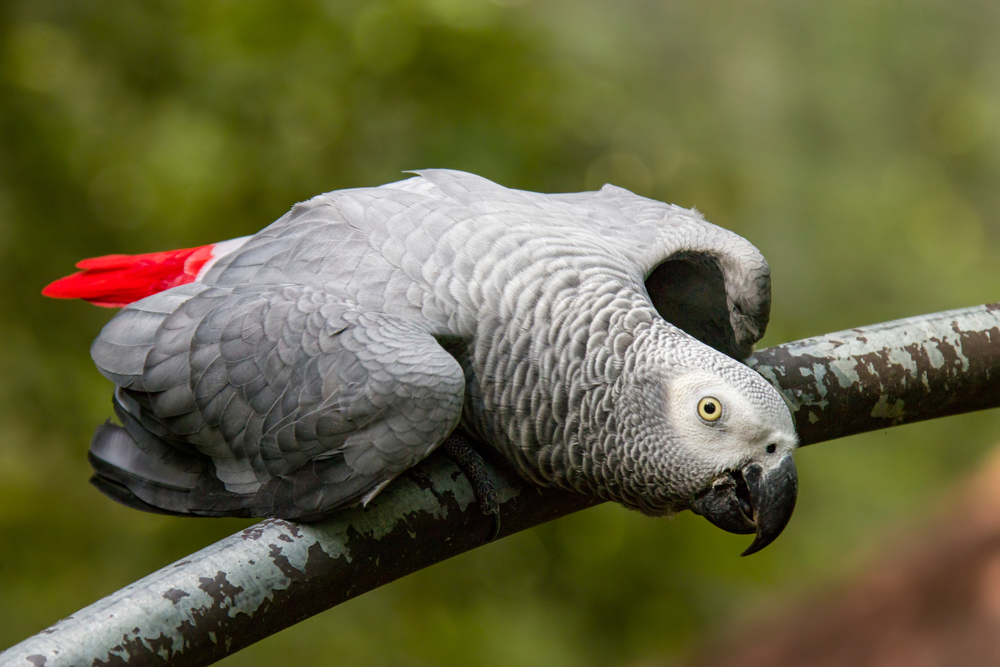
Training your bird to wear a diaper can be challenging, but it is possible with patience and positive reinforcement techniques. Here are some tips to help you train your bird to wear a diaper:
- Start with short sessions: Begin by putting the diaper on your bird for short periods, gradually increasing the duration as your bird becomes more comfortable.
- Use positive reinforcement: Reward your bird with treats and praise when it wears the diaper. This will help your bird associate the diaper with positive experiences.
- Be patient: Training your bird to wear a diaper can take time, so be patient and consistent.
- Observe your bird’s body language: Learn to recognize when your bird needs to go to the bathroom and take it to its designated area. This will help with potty training and reduce messes.
- Use a designated area: Designate an area for your bird to go to the bathroom, such as a specific perch or a litter box. This will help with potty training and make cleaning up easier.
- Use positive reinforcement for potty training: Reward your bird with treats and praise when it goes to the designated area. This will help reinforce the behavior.
Remember, bird diapers are not a substitute for proper care and hygiene. They should be used only by those who have experience caring for birds and have been trained in bird diapers by an experienced professional.
Pros and Cons of Bird Diapers
Pros
Bird diapers can be useful for pet owners who want to keep their homes clean and free of bird droppings. Here are some of the pros of using bird diapers:
- Comfort: Bird diapers are designed to fit comfortably around your bird’s body, so they won’t cause discomfort or irritation.
- Cleanliness: Bird diapers can help keep your home clean and free of bird droppings, which can be messy and unsanitary.
- Convenience: Bird diapers are easy to use and can save you time and effort when cleaning up after your bird.
- Price: Bird diapers are relatively affordable and cost-effective for pet owners who want to keep their homes clean.
Cons
While bird diapers can be a useful tool for pet owners, there are also some potential downsides to consider:
- Comfort: Some birds may find bird diapers uncomfortable or unable to tolerate them.
- Consistency: Using bird diapers requires consistent use and maintenance, which can be time-consuming and may not be feasible for all pet owners.
- Price: While bird diapers are relatively affordable, they can add up over time if you need to purchase them regularly.
- Effectiveness: Bird diapers may not be 100% effective at preventing bird droppings, so you may still need to clean up occasionally after your bird.
Overall, bird diapers can be useful for pet owners who want to keep their homes clean and free of bird droppings. However, weighing the pros and cons and considering your circumstances before deciding whether or not to use them is essential.
Bird Diapers for Conures
If you’re a Conure owner, you may have considered using bird diapers to keep your home clean and free from bird droppings. Bird diapers are a popular option for owners who want to give their birds freedom of movement around the house without worrying about messes. Here’s what you need to know about bird diapers for Conures:
How Bird Diapers Work
Bird diapers are essentially tiny cloth diapers that fit around the bird’s vent area. They’re designed to catch droppings and prevent them from soiling your furniture or floors. Most bird diapers have a waterproof layer on the inside to prevent leaks, and they’re designed to be easy to clean and reuse.
Choosing the Right Bird Diaper
When choosing a bird diaper for your Conure, it’s important to consider the size and shape of your bird. You must measure your bird’s vent area to ensure a proper fit. Look for a bird diaper made from high-quality materials with a secure, adjustable fit to prevent leaks.
Using Bird Diapers Safely
While bird diapers can be a helpful tool for keeping your home clean, it’s essential to use them safely. Ensure your bird is comfortable wearing the diaper and doesn’t experience any discomfort or irritation. Change the diaper frequently to prevent bacterial growth and clean your bird’s vent area.
Overall, bird diapers can be a valuable tool for Conure owners who want to give their birds freedom around the house without worrying about messes. With the correct diaper and proper care, you can keep your home clean and your bird comfortable.
Bird Diapers for Parakeets
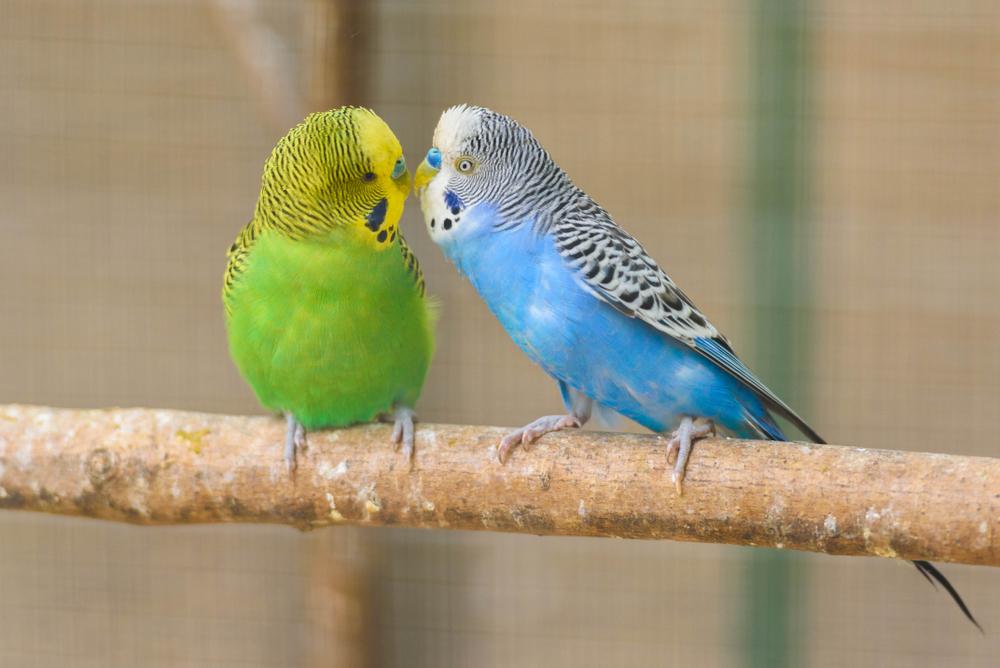
If you are a parakeet owner, you might wonder if bird diapers are a good option for your feathered friend. The answer is yes, there are bird diapers available for parakeets. These diapers can help keep your house clean and free from bird droppings.
Bird diapers for parakeets come in different sizes and styles. You can choose from disposable or washable diapers. Washable diapers are more environmentally friendly and cost-effective in the long run. They are also more comfortable for your bird and can be used multiple times.
When choosing a bird diaper for your parakeet, measure your bird’s waist to ensure a proper fit. The diaper should fit snugly but not be too tight, as this can cause discomfort or even injury to your bird.
It’s important to note that bird diapers should not be used as a replacement for proper care and hygiene. You should still provide your parakeet with a clean and spacious living environment, plenty of fresh water and healthy food, and regular exercise.
In summary, bird diapers are a safe and effective option for parakeet owners who want to keep their homes clean and tidy. Just make sure to choose the right size and style for your bird, and continue to provide them with the proper care they need.
Bird Diapers For Cockatiels
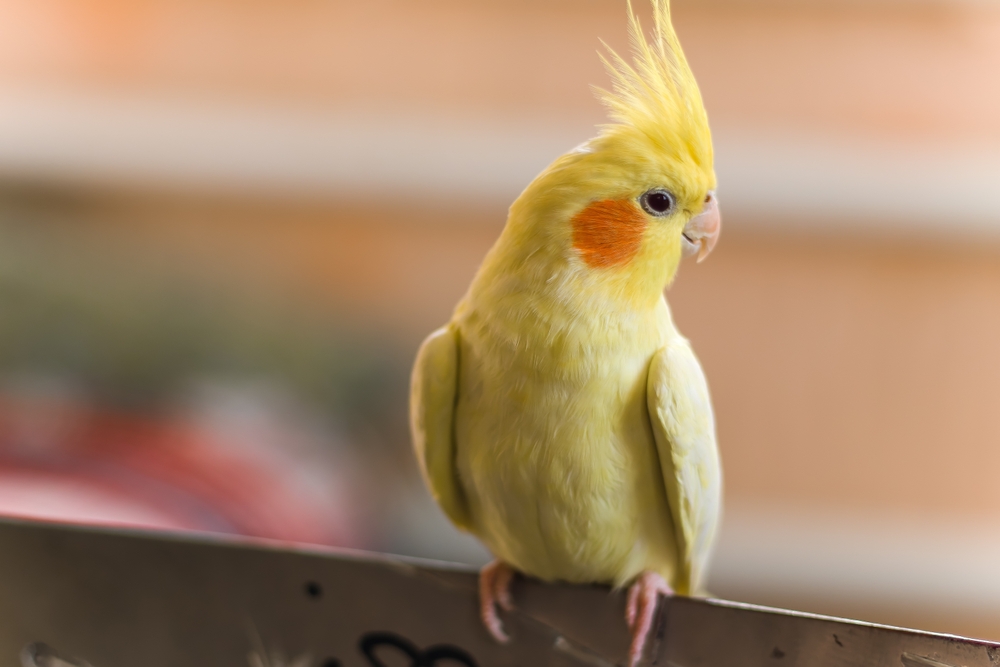
If you’re a bird parent, you may have considered using bird diapers to keep your home clean. Bird diapers are a great way to prevent bird droppings from soiling your furniture, carpets, and clothes. Cockatiels, in particular, can benefit from wearing bird diapers, especially if they spend much time outside their cage.
Several bird diapers are available on the market, but not all are suitable for cockatiels. When shopping for bird diapers, make sure to choose ones that are specifically designed for your bird’s size and needs. Here are some things to consider when selecting bird diapers for your cockatiel:
- Size: Cockatiels are small birds, so you must find a diaper that fits them comfortably. Look for diapers with adjustable straps or elastic bands to ensure a snug fit.
- Material: Bird diapers are typically made of fabric or plastic. Fabric diapers are more comfortable for birds but may not be as durable as plastic ones. Plastic diapers are more durable but may cause discomfort or irritation to your bird’s skin.
- Absorbency: The diaper you choose should be able to absorb your bird’s droppings effectively. Look for diapers with a high absorbency rate to prevent leaks and spills.
- Safety: Make sure your diaper is safe for your bird to wear. Avoid diapers with loose threads, sharp edges, or other potential hazards.
Once you’ve selected the right bird diaper for your cockatiel, learning how to use it properly is essential. Follow the manufacturer’s instructions carefully, and be patient with your bird as they adjust to wearing the diaper. You and your cockatiel can enjoy a cleaner, more hygienic home with a bit of patience and practice.
How to Make A Bird Diaper At Home
If you want to let your bird out of its cage without worrying about messes, you might want to consider making a bird diaper. Here’s how you can make one at home:
Step 1: Measure Your Bird
You’ll need to measure your bird to ensure you get the right size for the diaper. Measure the length of your bird from its neck to its tail and the circumference of its body. You’ll also need to measure the distance between its legs.
Step 2: Cut Out the Fabric
Using the measurements you took, cut out a piece of fabric for the front and back of the diaper. Cut strips of fabric for the shoulder straps and a piece of elastic for the tail strap.
Step 3: Sew the Diaper Together
Sew the front and back pieces of fabric together, leaving a hole for the tail strap. Sew the shoulder straps onto the front and back of the diaper. Attach the elastic to the tail strap and sew it onto the diaper.
Step 4: Put the Diaper on Your Bird
To put the diaper on your bird, slip its legs through the leg holes and bring the diaper up to its body. Fasten the shoulder straps and tail strap securely but not too tightly.
Remember to change the diaper regularly and keep an eye on your bird to ensure it’s comfortable and not experiencing any problems.
Making a bird diaper at home can be a cost-effective and practical solution for keeping your bird clean and comfortable outside its cage. However, it’s important to note that not all birds may be comfortable wearing a diaper, and it’s always best to consult a veterinarian before trying anything new with your pet.
Best Alternatives to Bird Diapers
If you are looking for alternatives to bird diapers, there are a few options you can consider. Here are some of the best alternatives to bird diapers:
1. Potty Training
Potty training your bird can be an effective alternative to using bird diapers. It takes time and patience, but it can be done. Start by observing your bird’s behavior and noting when they tend to go to the bathroom. Once you have a good idea of their schedule, you can encourage them to go to a designated spot. Use positive reinforcement, such as treats and praise, when they go in the right spot.
2. Cage Liners
Using cage liners is another alternative to bird diapers. You can use newspapers, paper towels, or even reusable liners made specifically for bird cages. Make sure to change the liner frequently to keep the cage clean and prevent health issues.
3. Training Perches
Training perches are designed to encourage birds to go to the bathroom in a designated spot. They are made with a tray at the bottom to catch any droppings. Place the perch in an area where your bird tends to go to the bathroom and use positive reinforcement to encourage them to use it.
4. Harnesses
If you want to take your bird outside, a harness can be an excellent alternative to bird diapers. It allows your bird to fly and move around freely while keeping them safe and preventing accidents. Choose a harness that fits your bird correctly and is comfortable for them.
Several alternatives to bird diapers can be effective and safe for your bird. Choose the option that works best for you and your bird’s needs.
Having A Shoulder Guard
If you want to avoid bird droppings on your clothes while carrying your bird on your shoulder, a shoulder guard might be a good option for you. A shoulder guard is a simple accessory that attaches to your clothes and provides a barrier between your shoulder and your bird.
Here are a few things to keep in mind when using a shoulder guard:
- Size: Ensure the shoulder guard securely fits your shoulder and doesn’t slip or move around. A properly fitting shoulder guard will prevent your bird from slipping down your shoulder and keep it in place.
- Material: Look for a shoulder guard made from a soft, breathable material that won’t irritate your skin. Some popular materials include cotton, fleece, and neoprene.
- Cleaning: A shoulder guard can get dirty quickly, so clean it regularly. Most shoulder guards can be washed in the washing machine, but check the manufacturer’s instructions before washing.
- Comfort: Your bird may hesitate to sit on a shoulder guard, so introduce it slowly and calmly. Once your bird gets used to the shoulder guard, it can be a comfortable and safe way to carry your bird.
Overall, a shoulder guard can be a valuable accessory for bird owners who want to avoid bird droppings on their clothes. With the right fit and material, a shoulder guard can be a comfortable and safe way to carry your bird on your shoulder.
Having A Portable Playground
If you’re looking for a way to keep your bird entertained while on the go, a portable playground might be your solution. These play gyms are designed to be lightweight and easy to assemble, making them perfect for travel or taking to the park.
One option to consider is the You & Me 3-in-1 Playground for Birds. This unique design offers three different configurations for the playground, including a ladder, swing, and dangling toy for your bird’s entertainment. It’s made with china-fir wood and cotton rope, making it durable and safe for your feathered friend.
Another option is the bird play gym set from Prevue Pet Products. This set includes a perch, T stand, swing, ladders, rattan ball bell, and chew toys, providing your bird with various activities to keep them physically and mentally engaged. It’s easy to assemble and mount onto your bird’s cage with wing nuts and washers.
When choosing a portable playground for your bird, consider the size and needs of your specific bird. Some play gyms may be more suitable for smaller birds, while others may be better for larger birds with more energy to burn.
Overall, a portable playground can be a great addition to your bird’s routine, providing stimulation and exercise even when you’re on the go.
Potty Training
Potty training your bird can be challenging, but it can be done with patience and consistency. The goal is to teach your bird to go potty in a designated area, whether it’s a specific perch or a bird diaper. Here are some tips to help you with the potty training process:
- Observe your bird’s natural bathroom schedule. Birds tend to go potty after they wake up, eat, and drink. Once you’ve identified your bird’s bathroom schedule, you can start to work on training them to go potty in the designated area.
- Choose a designated area for your bird to go potty. This can be a specific perch or a bird diaper. If you choose a perch, ensure it’s easy to clean and away from food and water dishes.
- Encourage your bird to go potty in the designated area. When you see your bird start to go potty, gently move them to the designated area and say a command, such as “go potty” or “do your business.” Over time, your bird will associate the power with going potty in the designated area.
- Reward your bird for going potty in the designated area. Positive reinforcement is key to potty training your bird. When your bird goes potty in the designated area, give them a treat or praise them with a verbal cue, such as “good boy/girl!”
- Be consistent. Potty training your bird takes time and patience. Stick to a routine and be consistent with your training. Eventually, your bird will learn to go potty in the designated area.
Overall, potty training your bird can be a challenging task, but with patience and consistency, it can be done. By observing your bird’s natural bathroom schedule, choosing a designated area, encouraging your bird to go potty in the designated area, rewarding your bird for good behavior, and being consistent with your training, you can successfully potty train your bird.
Best Potty Training Practices For Parrots

Potty training your parrot can be challenging, but with the right practices, it can be accomplished successfully. Here are some best rules to follow when potty training your parrot:
1. Consistency is Key
Consistency is essential when potty training your parrot. You need to establish a routine and stick to it. Take your bird to their designated potty spot at regular intervals, such as after meals, playtime, or when they wake up from a nap. Consistency will help your bird learn where and when to go potty.
2. Positive Reinforcement
Positive reinforcement is an effective way to encourage your bird to use their designated potty spot. When your bird goes potty in the right place, reward them with treats, praise, or a favorite toy. This positive reinforcement will encourage your bird to repeat the behavior.
3. Use a Cue
Using a cue like a word or a whistle can help your bird understand when it’s time to go potty. When you take your bird to their designated potty spot, use the cue consistently. Over time, your bird will associate the cue with going potty, making it easier to train them.
4. Pay Attention to Body Language
Pay attention to your bird’s body language, as it can signify that they must go potty. Birds may show signs like fidgeting, pacing, or vocalizing when they need to go. Immediately take your bird to their designated potty spot if you notice these signs.
5. Be Patient
Potty training your parrot takes time and patience. Don’t get discouraged if your bird has accidents or takes longer to learn. Consistency, positive reinforcement, and patience will help your bird learn where and when to go potty.
Following these best practices, you can successfully potty train your parrot and help them maintain good hygiene. Remember to be consistent, use positive reinforcement, and observe your bird’s body language. Your bird will learn where and when to go potty with patience and persistence.
How Do You Stop a Bird from Pooping Everywhere?
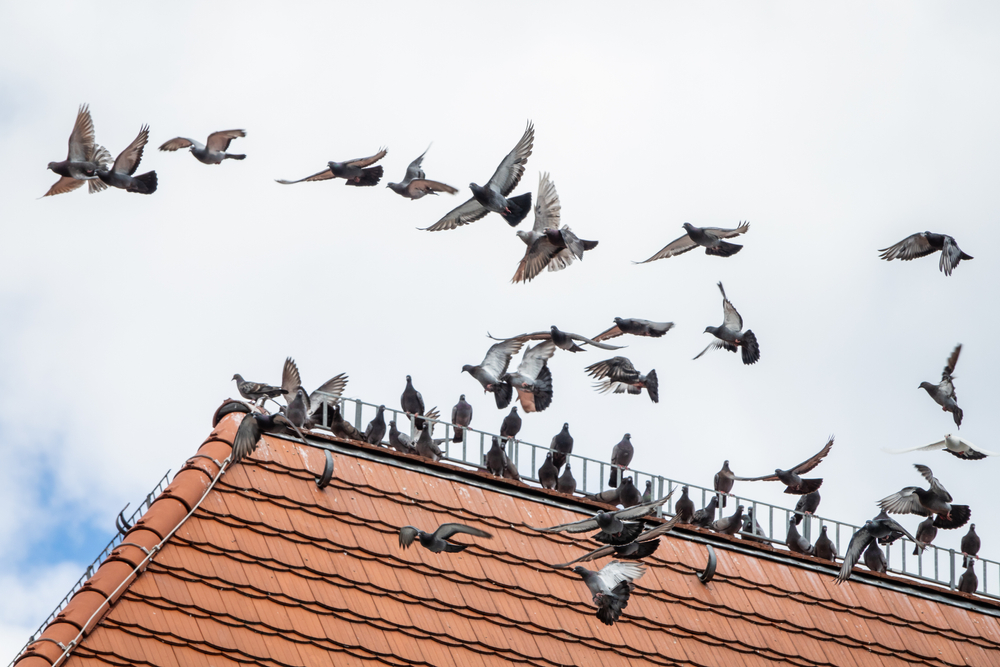
If you have a pet bird, you may wonder how to stop it from pooping everywhere. While it’s normal for birds to poop frequently, you can do a few things to minimize the mess.
Keep Your Bird in a Cage
One of the easiest ways to control your bird’s poop is to keep it in a cage. This way, you can easily clean up after your bird and prevent it from pooping on your furniture or floors. Ensure the cell is large enough for your bird to move around comfortably and has a tray at the bottom to catch the poop.
Observe Your Bird’s Poop Schedule
Birds have a regular poop schedule; if you pay attention, you can anticipate when your bird will need to go. This will allow you to take your bird to its cage or designated pooping area before it has a chance to make a mess. For example, if you notice that your bird usually poops after eating, you can take it to its cage or designated area after mealtime.
Restrict Your Bird’s Flying Space
If you allow your bird to fly around your home, it’s essential to restrict its flying space to a designated area. This will make it easier to clean up after your bird and prevent it from pooping on your furniture or floors. You can use baby gates or other barriers to create a designated flying area for your bird.
Clean Up the Poop Right Away
Finally, cleaning up your bird’s poop immediately is essential to prevent it from staining your furniture or floors. Use a bird poop remover or a mixture of water and vinegar to clean up the mess. You should also clean your bird’s cage regularly to prevent the buildup of poop and bacteria.
By following these tips, you can minimize the mess caused by your bird’s poop and keep your home clean and tidy. Remember to be patient and consistent with your training, and don’t expect your bird to be perfect immediately. You can train your bird to poop in designated areas and minimize the mess with time and effort.
Top 10 Best Bird Diapers In 2023
If you’re a bird owner, you know how important it is to keep your home clean and hygienic while allowing your feathered friends to roam freely. Bird diapers are a great solution to this problem. They’re designed to fit birds of all sizes and come in a variety of colors and patterns to suit your taste.
To help you choose the best bird diaper for your feathered friend, we’ve compiled a list of the top 10 best bird diapers in 2023.
- HEZHUO Flight Suits, Reusable Waterproof Bird Diapers
- QBLEEV Cockatiel Flight Suit Liners Bird Diapers
- Baluue L34288104U 2Pcs & Washable & Parakeet Harness Bird Diapers
- QBLEEV Liners Blue Bird Diapers
- KINTOR Bird Diaper
- Niteangel Adjustable Bird Diaper
- FDC Parrot Bird Diaper
- PET SHOW Bird Diapers
- GLOGLOW Bird Diapers
- HEEPDD Bird Diapers
Each of these bird diapers has its features and benefits. The HEZHUO Flight Suits, for example, are reusable and waterproof, making them a great choice for birds who love to splash around in their water dishes. The QBLEEV Cockatiel Flight Suit Liners are perfect for cockatiels and other similar-sized birds. The Baluue L34288104U Bird Diapers are a budget-friendly option that are also washable and comes with a parakeet harness.
Whether you choose bird diaper, follow the manufacturer’s instructions for proper use and care. With the right bird diaper, you can keep your home clean and your bird happy and healthy.
Avian Fashions
If you’re looking for bird diapers, Avian Fashions is a popular brand offering various bird diapers and accessories. Here are some key points to know about Avian Fashions:
- Avian Fashions’ bird diapers, also known as FlightSuits, are lightweight, stretchy fabric that allows birds to move freely while wearing them.
- The FlightSuits come in various colors and patterns to match your bird’s personality and style.
- The patented Poop Pouch collects droppings, keeping you and your bird clean and comfortable.
- The FlightSuits are reusable and can be machine washed and dried.
- Avian Fashions also offers leashes and harnesses designed to work with the FlightSuits, allowing you to take your bird outside safely.
When purchasing a FlightSuit, measuring your bird correctly is essential to ensure a proper fit. Avian Fashions provides detailed instructions on measuring your bird on their website. They also offer a sizing chart to help you choose the right size for your bird.
It’s important to note that while bird diapers can be a convenient solution for indoor pets, they should not be used as a substitute for proper care and attention. To thrive, birds need regular exercise, a healthy diet, and social interaction.
Overall, Avian Fashions is a trusted brand in the bird diaper market, offering various options for bird owners who want to keep their pets clean and comfortable while indoors.
Conclusion
In conclusion, bird diapers are convenient for pet owners who want to keep their homes clean and hygienic. While there are some concerns about the safety of bird diapers, research suggests that they are generally safe for birds to wear.
When it comes to pet care, it’s essential to consider the individual needs of your bird. Some birds may not tolerate wearing a diaper, while others may benefit from the added convenience. It’s essential to monitor your bird’s behavior and health when using a diaper to ensure it is not causing discomfort or health issues.
Diapering your bird can be helpful in potty training and keeping your home clean. However, following proper diapering techniques and hygiene practices is essential to prevent potential health risks. Always make sure to change the diaper frequently and dispose of it properly.
Overall, bird diapers can be a helpful tool for pet owners looking to keep their homes clean and their birds healthy. With proper care and attention, bird diapers can be a safe and effective option for potty training and convenience.
For More Info : https://www.audubon.org/
Tags : bird diapers for conures
Tags : how to make bird diapers
Tags : bird.diapers reddit
Tags :
How do you properly fit a bird diaper?
To properly fit a bird diaper, measure your bird’s waist and choose the appropriate size. The diaper should fit snugly but not too tight, covering the vent area completely. Adjust the diaper as needed and check it regularly for discomfort or irritation.
Are bird diapers safe for birds?
Bird diapers can be safe for birds if they are used properly. However, if the diaper is too tight or not changed frequently enough, it can cause discomfort, irritation, and even infection. It is essential to choose the right size and fit for your bird and to monitor the diaper regularly to ensure it is not causing any problems.
Can bird diapers be reused?
Yes, some bird diapers can be reused. However, it is important to follow the manufacturer’s instructions for cleaning and disinfecting the diaper before reusing it. Using a dirty or contaminated diaper can cause health problems for your bird.
What materials are bird diapers made of?
Bird diapers can be made of a variety of materials, including cotton, fleece, and nylon. Some diapers also have a waterproof layer to prevent leaks. It is important to choose a diaper made of high-quality materials that are safe for your bird and easy to clean.
Do bird diapers affect a bird’s ability to fly?
Bird diapers should not affect a bird’s ability to fly if they are properly fitted and not too bulky. However, some birds may be uncomfortable or resistant to wearing a diaper, which can affect their behavior and activity levels. It is important to monitor your bird’s behavior and adjust the diaper as needed to ensure they are comfortable and able to move freely.